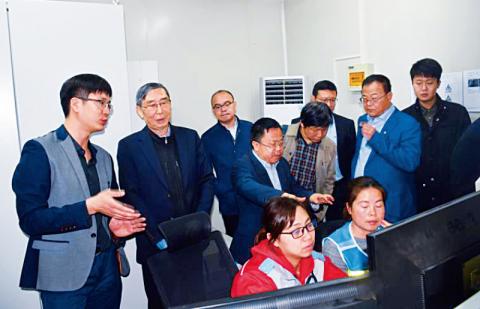
On March 26, China Petroleum and Chemical Industry Federation appraised the achievement of the “Intelligent Tire X-ray Defect Detection System” in Hefei, and experts unanimously agreed that this product, with advanced technical indicators and strong applicability, had reached the international advanced level. This marks the Chinese intelligent tire X-ray defect detection technology walking into the intelligent era.
Jointly researched and developed by Shenyang Ligong University and Guangzhou Ainstant Industrial Equipment Co., Ltd., this technology, with independent intellectual property right, can automatically detect the inner quality of tires, which greatly improves the tire defect identification efficiency and saves labor costs, filling the gap of the Chinese intelligent tire X-ray defect detection system. After more than half a year of application by Hefei Wanli Tire Co., Ltd., the performance is stable and reliable, which greatly reduces the rate of defect detection omission and improves the efficiency of online tire testing, meeting the requirements of tire testing and improving the utilization safety of tires.
The innovation of this intelligent detection system is mainly reflected in the following: A deep convolutional neural network is used on tire X-ray image recognition for the first time in the world, which builds different network models according to the complexity of different defects and characteristics of details with automatic identification and self-learning functions, reduces overall omission identification rate, and improves the recognition speed and accuracy; by using the self-developed defect localization algorithm, the tire quality defects in the X-ray image are identified and located, which solves the technical problems that the original internal quality detection of all-steel radial tires is difficult to achieve automation and intelligence; accord-ing to the different characteristics of the tire defect area, characteristic detectors of different scales are designed to improve the accuracy of defect location; and through the pretraining model, the automatic auxiliary marking of tire defects is realized.
(Chen Weifang)




